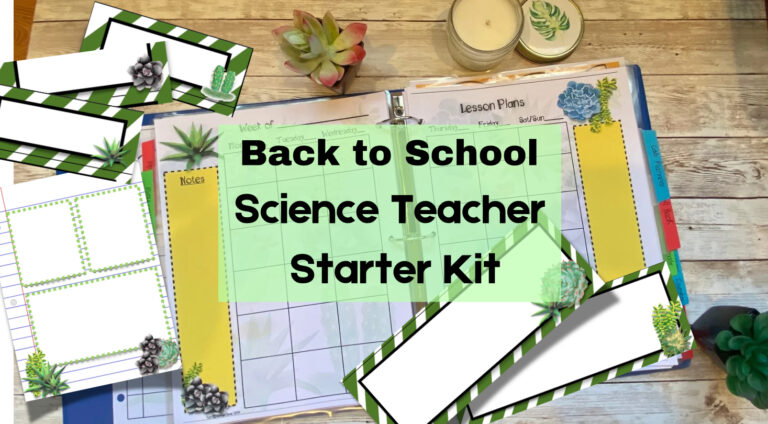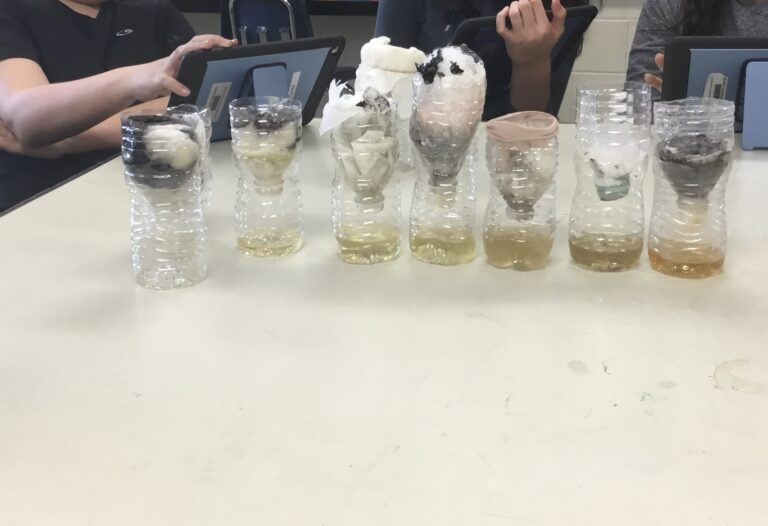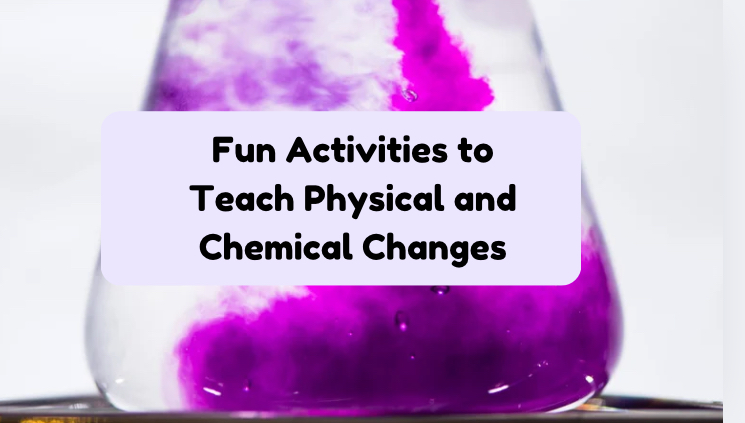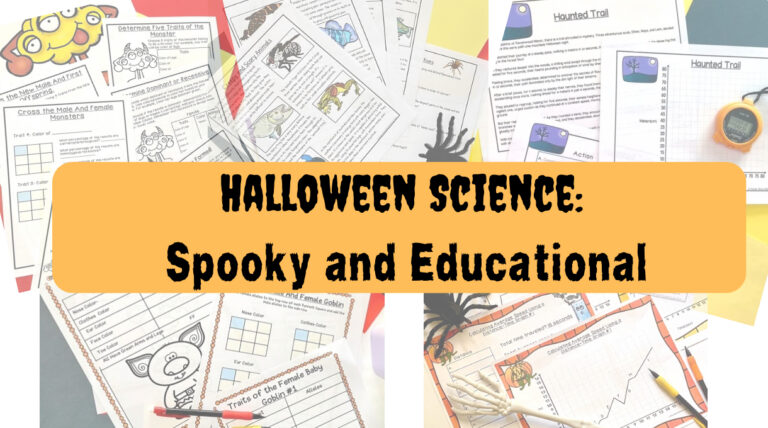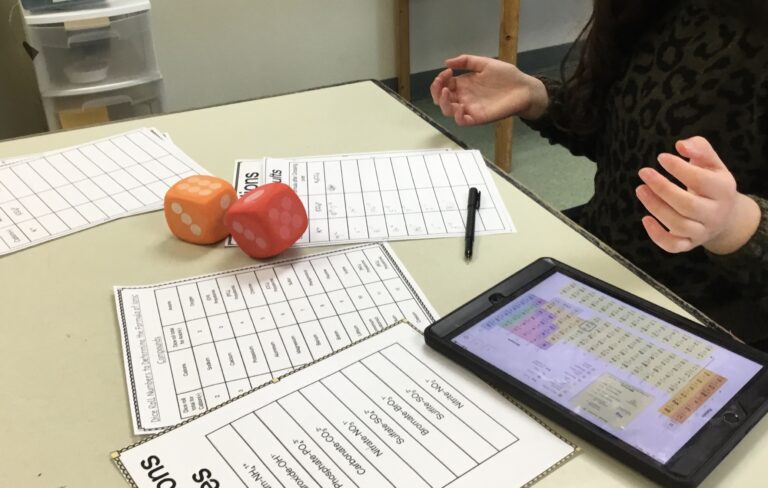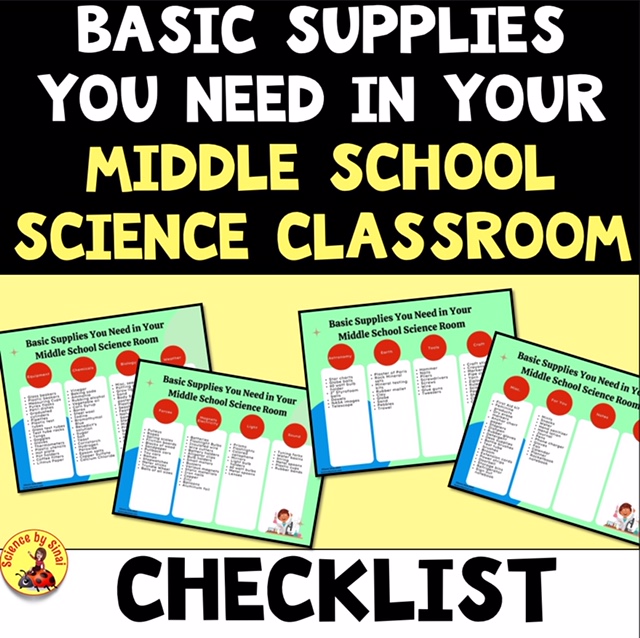What Students Should Know Leaving Middle School Science
Besides all of the concepts that we need to cover, what do students need to know leaving middle school science?

What Students Should Know Leaving Middle School Science
Updated May, 2024
Of course, we want our students to be good citizens and independent workers, but what else? Here is a list of skills that I think we will agree are critical to cover besides our extensive content.
Critical Thinking Is First!
In my opinion, critical, thinking should be the top of the list. Being able to look at data in a rational, organized way, and draw correct conclusions is important. So many “sources” are thrown at us from social media and other places. Teaching students to weed out “the real science” is critical. Many students may not understand the concept of “fake science”. Future voting decisions, homeownership, career choices, and so on, will all need to be researched the correct way, with analytical thinking.
Learning critical thinking should be taught in as many different ways as possible. I start my classes with CER image writing prompt bell ringers or I weave it into other assignments, such as analyzing a chemical reaction.(Using CER Image Prompts as Bellringers)
I find that praising the students for thinking hard is effective as long as it’s not overdone. Let’s be honest, most students look for quick, easy answers so they should be rewarded for the extra brain work.
Organizational Skills
One of the hardest things to teach another person is how to organize themselves. So much of it is a personal preference and style. That being said, most middle school students haven’t really “found their groove” yet in terms of being self-sufficient and mindful of their time and materials.(Teaching Students Organizational Skills)
That’s where we come in as teachers to model, model, model.
In sixth grade, I write up most lab result sections with data charts and questions that need to be addressed. Students need to see how it’s done, over and over. This means that by the time they are in eighth grade I can say “create your own data charts” for the lab that we are doing.
How to Keep a Notebook
As for student notebooks, I have gone digital, which was the best organizational change I ever made. I let the students design their own pages, and at the end of each unit I have a rubric which includes a table of contents, all homework assignments, video notes, book notes, lab reports, activities, project brainstorming, etc. No more loose papers all over the place. (How I Use Digital Science Notebooks to Maximize Student Learning)
If you are using paper notebooks I recommend one composition book per unit. Include a table of contents and a rubric to grade them at the end of the unit. I tried doing whole semester, or yearly notebooks and it was a mess.
I have mentioned before that my ADHD students, or even those on the spectrum, thrive with digital organization. I have a student whose handwriting is basically incomprehensible on a written test. I often have to ask him to translate. His digital notebook on Google Slides? Perfect score, every unit.
Teach Them to Be A Good Person
I will always pause my class if I hear someone not treating another correctly. My expectations are high and I never waver when it comes to bullying, insulting or excluding someone else, etc. Respect to themselves, teachers and others ranks high with what students should know when they leave middle school. As they head for high school, there will be less forgiveness.
I find boosting a child’s self-esteem goes miles with their behavior towards others. If your classroom is set up for “little wins”, then everyone gets a chance to feel good about themselves. I also use praise. Genuine praise. A little goes a long way!
Study Skills Are Essential
Let’s face it. Many students arrive in middle school without a strong set of study skills. A large part of teaching any subject is teaching students how to learn. Simply telling them to “study for the test” won’t cut it.
They don’t even know where to start!
Show them how to use flashcards, quiz websites, paired learning games, etc. This will help get them motivated to study and to see the benefits. That said, I strongly believe in using many different types of assessments to hit all learning styles. (10 Ways to Assess Students in the Science Classroom)
How to Take Notes
Everyone should know how to take notes from someone who is speaking or from a text source. Again, we can’t assume students have this skill, and we must model it repeatedly. Give students templates to help organize their thoughts. I especially like Cornell notes and teach it as soon as they get into middle school. After they have completed any notes, I grade them carefully with suggestions.
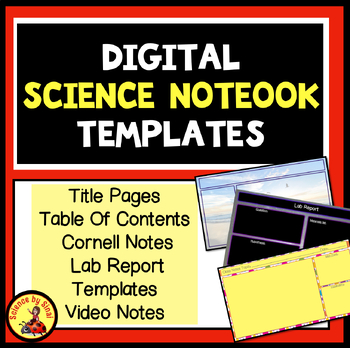
Since I have digital notebooks, I can watch the students on their iPads from my iPad. I often realize that I need to slow down and model more. Sometimes several students have barely any words written!
Many students can’t process notes quickly, so they miss important points. It’s always good to have visuals and to wait for everyone to catch up.
Reading Comprehension and Pulling Information From Text
This is a very important skill. I have been frustrated seeing even eighth graders read text and choose some of the least important information as they take notes! Guided notes and comprehension questions really work well to teach students how to glean the main ideas out of a text.
Look for interesting reading passages that have students practicing over and over. Don’t shy away from textbook passages as students will need to use them in high school.
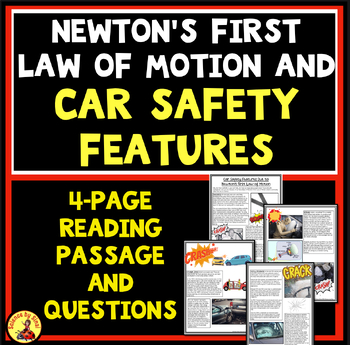
Compare Contrast Using A Venn Diagram
The idea of comparing and contrasting sometimes confuses students as they listen to a lecture, watch a video or read text. Being visual with a diagram helps. However, you will need to model a lot.
Look for situations for students to practice in all of your units. For example, have them compare and contrast the wings of birds and bats, a desert ecosystem to a grassland, or characteristics of a metal versus a nonmetal.
Construct and Read A Graph
When I start teaching graphing to my sixth graders, I start with students using graph paper to draw bar and line graphs. This way, students really understand how and why each plot point is located on the graph.
We then move onto creating graphs with Google Sheets, Numbers, or Excel. Without doing it on paper first, these apps almost seem to create “magic” as they generate graphs from a spreadsheet. I’ve also noticed that if the app is incorrect at interpreting the spreadsheet, students will pick it up faster if they have done it on paper previously.
Before I did the paper activity, they had the wonkiest, meaningless, computer generated graphs but always with lots of pretty colors!
Search for graphs for students to read and interpret from real data. What trends do they see? How would the graph look differently if the increments of y-axis were changed? Why would someone presenting the graph change the increments to make the data look more dramatic? Again, the importance of learning to distinguish “real science”.

Research Skills
I love to bring up a picture of someone using the Dewey decimal system, in a library, and tell students how I did research at their age! We had to go through the filing system, which was difficult in itself, and then pray that the book that we needed was on the right place in the shelf, or even in the library at all!
Yes, I’m dating myself, but it really gets the point across to the students as they sit there in shock listening to me.
Now the students have the problem that there is TOO MUCH information to weed through and a lot of it is unreliable. Start with explaining the reason why most teachers don’t allow Wikipedia for research and then how anyone can create a website.
One of my favorite activities is going to the website called HELP SAVE THE ENDANGERED PACIFIC NORTHWEST TREE OCTOPUS. It is a well written, scientific looking page that is completely BOGUS but extremely convincing. I casually assign it and ask students to take notes on the main points. It is amazing that, most years, none of the students question the fact that an octopus climbs a tree!
When doing research projects always ask the students to use citations and make sure you spot check them. Students must learn the laws of copyright and the consequences for plagiarism. They need to understand that just because an image is on the internet, that they can right click and save, doesn’t give them free rein to use it anywhere. Honestly, many adults still don’t understand that! Google images seems like an endless source of free pictures.
Students also need to understand the methodology for doing a research paper. Model how to outline their thoughts and how to structure the paper so that they don’t ramble randomly.
Work Ethic and Pride in Their Work
This isn’t so easy to teach, but if you set up the classroom with many little wins, it will become easier. Try not to focus on “getting it done for the sake of the grade”. This may encourage overwhelmed students to take shortcuts, or to shut down completely.
Break down work into little bites. Brainstorm with them and then do daily check-in so students feel accomplished. Reward the work that is done for those that struggle.
If an assignment is ripped out of a notebook and it tears, don’t accept it. Keep your standards high, and students will rise to them. Model at the beginning of the year what is acceptable and talk about having pride in their hard work.(First Day of School in Middle School Science)
Learning How to Communicate
This covers many aspects of being a good student and citizen. How should students ask for help in class? What should an email to you look like? Should it look like you’re texting your teacher? Model this on the first day of school.
Discuss how to work in a group where others may have different opinions than yours. Constantly remind them how they would prefer to be treated themselves.
Organizing a Project
Some teachers may shy away from long-term projects, such as Rube Goldberg machines, or other STEM activities. This could simply be because the lack of structure and chaos is just too much. (Science Projects-10 Questions to Ask Yourself Before Assigning One)
Try structuring the projects in doable sections with stop points. Implement daily rubrics to keep up accountability. When students learn how to work against reasonable deadlines, they are calmer and more organized with less “false starts”.
If possible, I try to keep the majority of the project work in school rather than at home. This means each student learns time management equally without having home distractions.
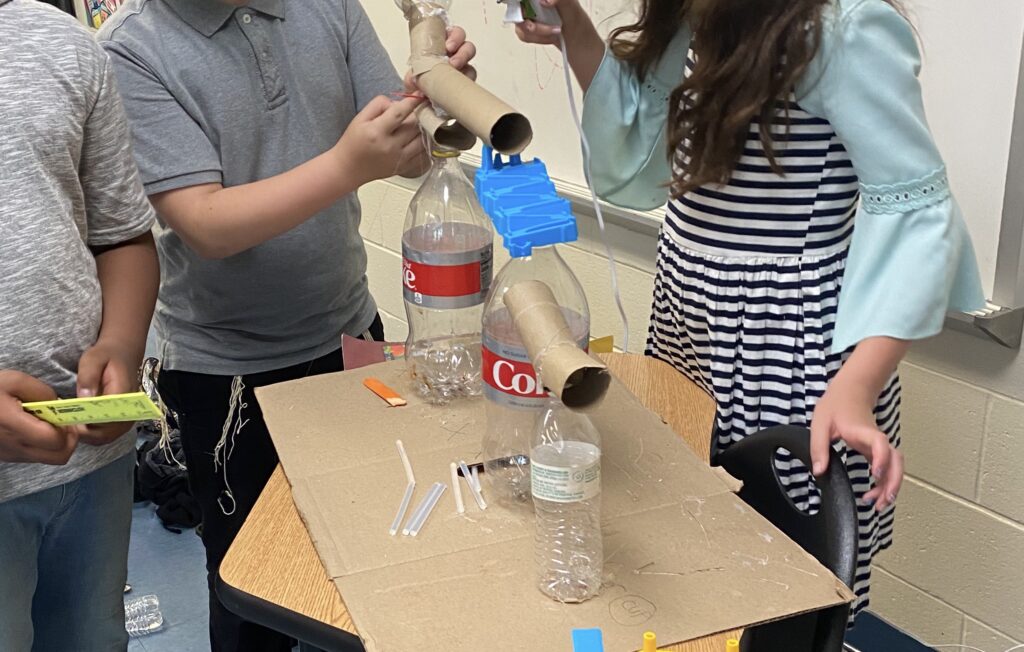
Learn Enough Basic Science Concepts to Make Intelligent Decisions
Of course, we have course content that needs to be taught. However, I believe that every concept should be brought into the student’s every day lives. Work hard to tie the topics into their world. Anticipate the “why do we have to learn this?” and START with the importance first. This helps the students be engaged and own the material.
For example, if you’re studying weather and clouds you can ask the students “how did you know, before you started this unit, that it might rain by looking at the sky?” Build on their existing knowledge, and they will see how knowing more simply enriches their lives.
Yeah, yeah, not every concept works out so well. However, the more you try to make it relatable, the better.
There are teachers who feel rushed to get concepts into students before end of year testing. If you choose even the shortest activities, that are relevant to their lives, you will find much more concept retention.
Conclusion
There are a lot of concepts that we need to get into middle school students, in terms of the actual science content. However, making them into good citizens, self-reliant learners, and organized workers, is critical as well. Please check out my other blog posts on how to structure projects, keep students organized, set up digital notebooks, teach relevant topics, etc.



